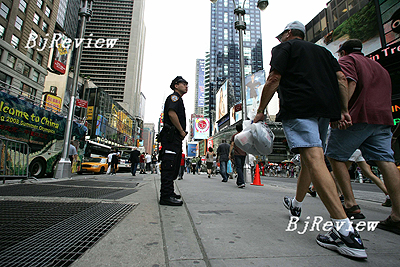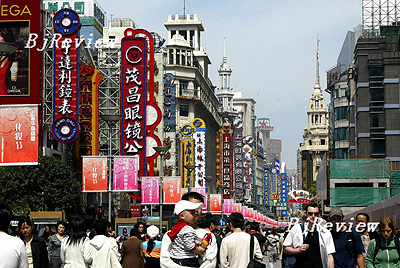
It's not without ample reason that many refer to New York City (NYC) as the financial capital of the world. Recent affront by the city of London, aside, there are a few distant challengers emerging in East Asia. In particular, Shanghai has become a base for many international corporations, and stock listings for leading Chinese firms. The city has been called the New York of China, if not of the East. In my work at a leading telecommunications software development firm, I have made the trans-Pacific commute numerous times and acquired a strong sense of the business environment in the two cities. In both cities, I found the entrepreneurial spirit to be alive and strong.
NYC is famous for its financial market and expertise, as well as its international business network. It has been a key player in developing financial products and home to some of the world's leading financial service firms. Its friendly business stance has kept the spirit of innovation alive and attracted an extensive pool of international talent. Managers and employees in the city thrive on a bottom-line mentality, making deals as quickly and profitably as possible. Shanghai, in comparison, is a city much like NYC: a metropolis that attracts the best and brightest and boasts a strong entrepreneurial spirit. Many of the leading firms in finance and other industries are setting up country or Asian-regional headquarters in the city, as well.

Commuting to work is one area in which the two cities are quite similar. The subway and bus systems are the heart of both. NYC benefits from three commuter rail lines that bring in people from the distant suburbs, while commuters in Shanghai rely on subway and bus lines. Shanghai's mass transit is a step above NYC's however, with its clean, modern subways, which rapidly transport people to the heart of the city where they work--no need to change from train to subway. New York is very car- friendly, though, and has coped well with the rise in traffic over the past 50 years. The continued strength of Shanghai will depend on its ability to create a transportation infrastructure that rapidly moves people into and around the city.
On the other hand, the two cities have many differences in terms of business culture. China is to some extent still a high-context society in which opportunities come from relationships and are cultivated over a long period. In many instances, deals in Shanghai are still based on the traditional Chinese practice of relationship building, guanxi. There you have two extremes: deal- hungry entrepreneurs who discount traditional relationship building and propose deals at the outset of a meeting; and those who continue with the traditional guanxi system, building relationships for long periods before a deal is finalized. New York is less polarized. There is a culture of stability in which deals don't rest on relationships alone, but well-aligned interests do play an important role. Stability in employment is also different. There is a hunger that can be felt in China from many job seekers who stay in a job for a few months to a year, before switching to a position in a competing firm with higher pay and greater responsibility. In New York, as in much of the United States, switching firms as a recent graduate is frowned upon and demonstrates instability, rather than hunger. Thus, the method of the entrepreneur is quite different.
The competition for employment in Shanghai goes beyond hunger though. There is great pressure from parents on children to reach certain income levels, purchase an apartment or car, and do not just better, but far better than their parents. Competition for spouses has become a matter of how much you have achieved materially in comparison to others. This pressure has led many to burn out, or change jobs frequently. Thus, many entrepreneurs or executives have a difficult time retaining productive employees within their firms. In particular, there is a lack of mid-level managers. Because the market in Shanghai has opened up rapidly for nearly 30 years, there have been many new entrants. So while new entrants in New York must focus on developing niche products that out-compete established firms through innovation, new firms in Shanghai often compete on production costs for similar products.
As Shanghai continues to grow and become a center for business in the Far East, New York will remain the financial capital of the world.
(With Steve Bisogno contributing to this story)
The author is president and CEO of Montina, Inc., New Jersey, U.S.A. |